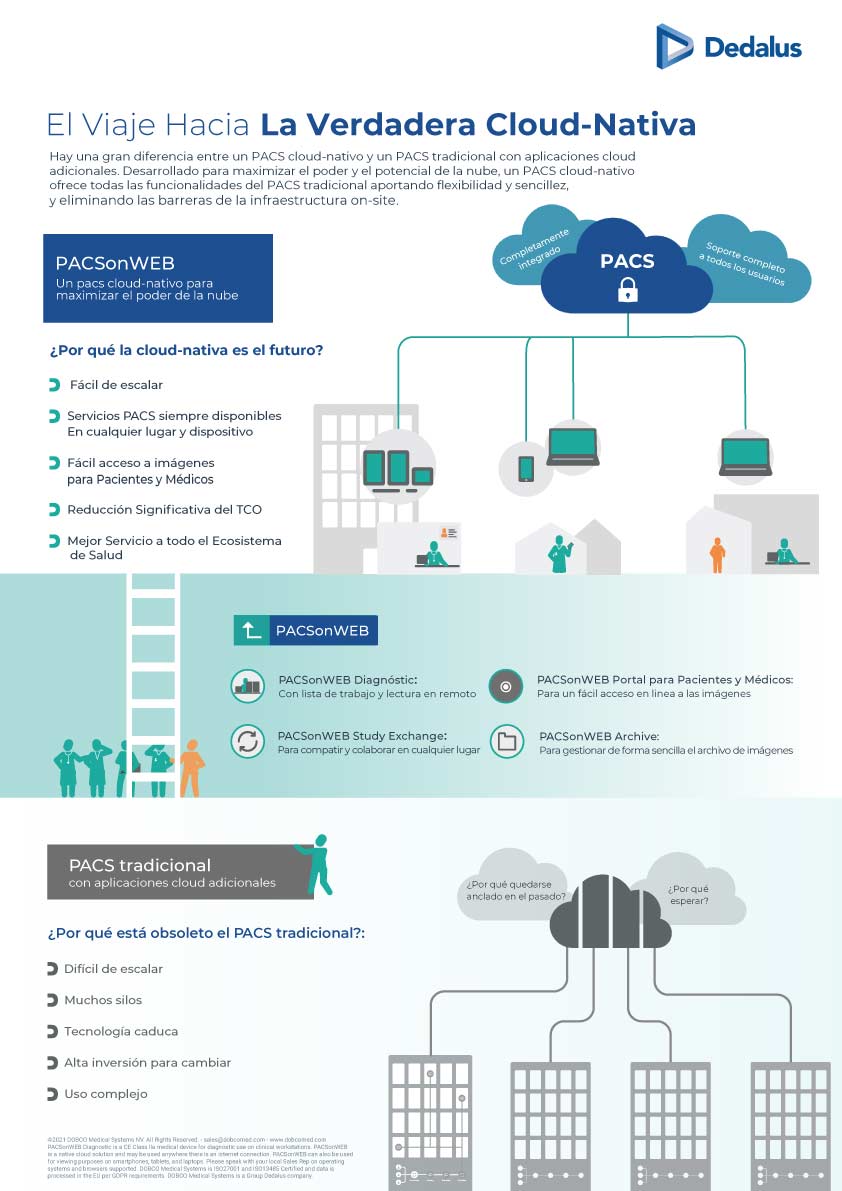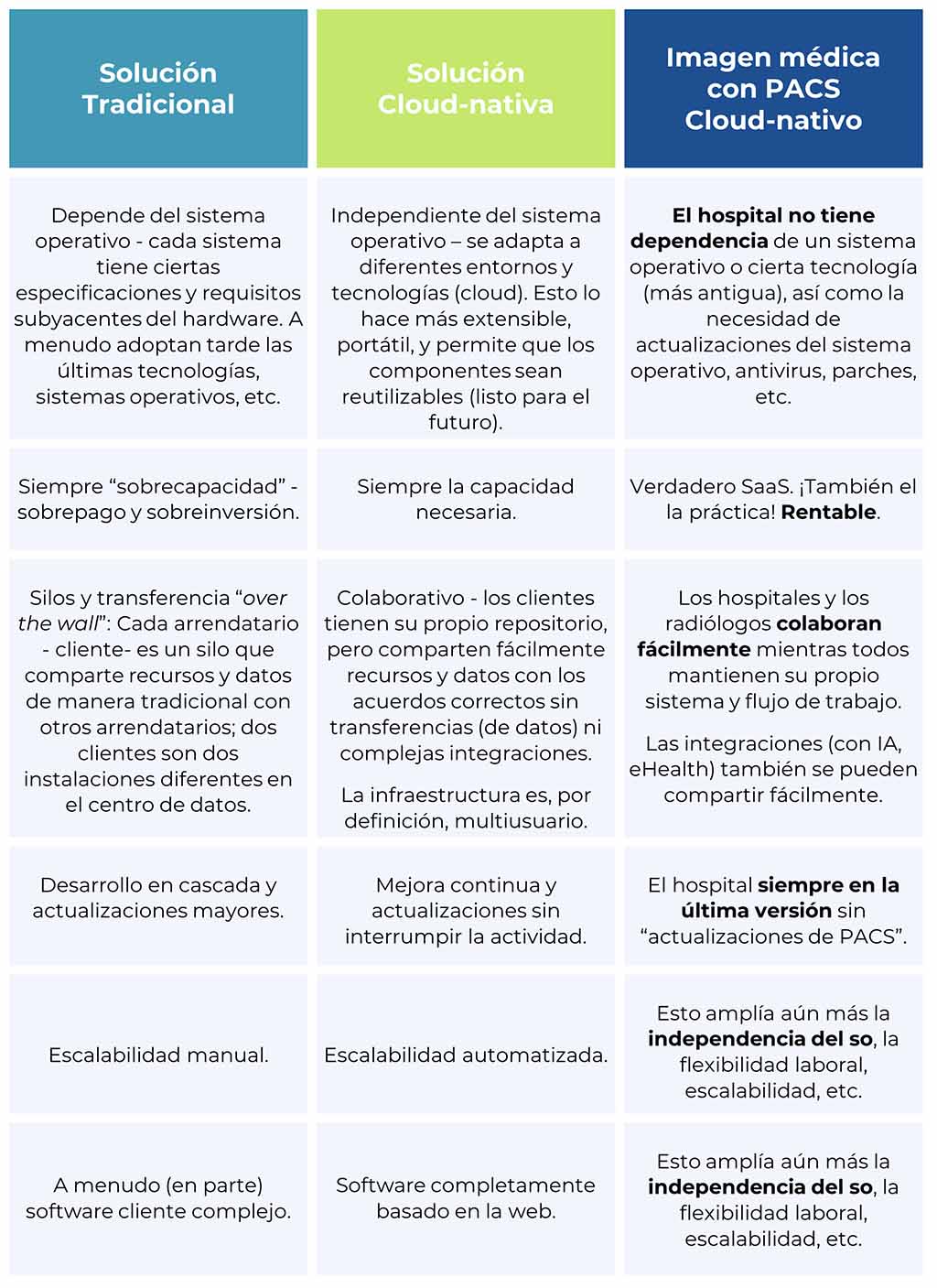The Journey to the True Cloud
Dobco, a Dedalus Group company

The Journey to the True Cloud
Consumer and enterprise software has undergone a significant evolution over the past five years. Many industries have reached a point where Software as a Service (SaaS) has imperceptibly become the norm. The use of Microsoft Office products, for example, has silently morphed into Microsoft 365, which is offered as a service. At home, we use a whole range of Google, Apple and other software products – all delivered as a service, most of them subscription-based.
n healthcare we are also seeing the transition to SaaS solutions. New applications such as AI (Artificial Intelligence) are often already cloud native by default. The semantics of “native” here indicates being developed in the cloud from the outset. For EHRs (Electronic Health Records) and also PACS (Picture Archiving and Communication Systems), which are so critical and complex, the transition to that (native) cloud is very slow. This inertia can largely be attributed to two main causes:
- The established PACS vendors have feature-rich legacy systems, which are based on relatively older technology that was never designed for the cloud.
- The suspicion of end users regarding security, availability and response time of cloud native software. Indeed, many healthcare institutions imagine a SaaS solution as slow and unreliable. There is a perception that an application running in a public cloud is going to make the system slower and less reliable. In reality, nothing could be further from the truth: SaaS often proves to be better, more efficient and more secure than privately-managed data centers.

Why cloud native is the future
As expectations and experiences with SaaS continue to evolve, it is clear that the days of healthcare institutions making significant investments in acquiring and managing local soft- and hardware are numbered. Enterprise application users expect to pay for software on a usage basis.
They expect to have access to the latest features as soon as they become available, and they expect software performance to automatically adapt to ever-changing requirements.
Meeting these needs requires cloud native development and born-in-the-cloud software solutions that enable automatic scalability, continuous product innovation, easy extensibility, and intuitive configurability.
Download the infographic “The Journey To The True Cloud”
Cloud-native vs Traditional Applications

One might assume that designing a SaaS-based PACS is as simple as installing a traditional PACS in a data center, and then encasing it with some public services. But to really understand the benefits of a cloud native PACS, we need to look a little deeper, as there are a lot of differences between the two architectures.
The following table shows a comparison between the traditional solutions and the Cloud-native-based solution at the level of aspects such as the greater or lesser dependence on the operating system, the use-profitability ratio, the capacity they offer to promote more or less collaborative environments or its scalability.
The third column summarizes the main advantages and benefits that Cloud-native can offer digital medical imaging services in relation to the points compared.
Dedalus’ PacsonWeb solution was born to respond to this casuistry and is now available for the Latin American market. If you wish to request information, you can do so by filling out this contact form.
Article Source: www.pacsonweb.com